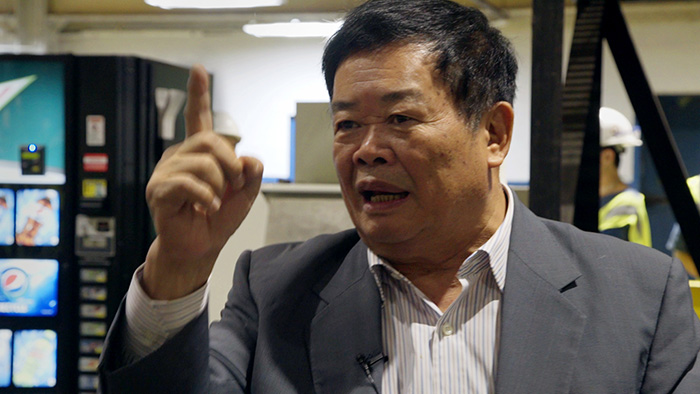The future is bright.
Directors Steven Bognar and Julia Reichert were in Moraine, Ohio (a Dayton suburb) when the local General Motors plant closed to film a short documentary for HBO Films entitled The Last Truck: Closing of a GM Plant. By interviewing ex-employees to learn how the factory impacted their lives on a personal level and their community on a broader scale, the filmmakers sought to memorialize an era of American history that’s been steadily dying as new technologies and rising costs shift our economic landscape. So it makes sense that Bognar and Reichert would want to return in 2015 to witness the city’s latest chapter of rebirth courtesy of Fuyao Glass America. While industry may have returned almost a decade later, however, those glory days of old remained distant memories.
The biggest reason is financial. As those workers who were employed by both entities explain, their salaries are now less than half of what they were. That middle class life that GM afforded becomes the major impetus for what occurs during the course of American Factory‘s three years on the ground since Fuyao chairman Cho Tak Wong has never needed to deal with workers that know their actual worth. Operating in China has allowed him an executive-level capitalist freedom that America simply cannot supply. The irony is of course that those capitalist freedoms arrive courtesy of a communist government. His employees have no choice. They don’t live for excess. They don’t care about having a voice. They show up, work mandatory overtime above twelve-hour days, and say nothing.

So he arrives in Ohio with a big grin on his face as an unlikely messiah. Cho understands this investment is huge for the city and basks in that appreciation with a belief that its citizens will submit to his whims as compensation. And for a brief time they do. They see this as an opportunity to build something new and perhaps get back to the level of fiscal possibility GM possessed during its heyday. This means falling in line to learn an entirely new industry from a crew of Chinese supervisors. It means checking their egos at the door to embrace change and try things a different way. But what happens when the first quarter numbers arrive to show goals haven’t been met? Promises start being broken.
It all stems from a culture clash that can’t be solved with compromise. How these nations run and how their working classes view themselves are vastly different in ways that won’t be bridged by bare minimum attempts at placation. Why? Because appearances are deceiving without a handle on what creates them. The Americans look upon their Chinese counterparts in awe of their work ethic, but what about the underlying unhappiness shielded by an ingrained futility that prevents them from even thinking about improving conditions? The Chinese look upon their American counterparts as lazy and entitled with “fat fingers,” but what about the monumental difference in cost of living that turns a job like this into an existential nightmare because working it isn’t nearly enough to survive?
The conversations Bognar and Reichert capture are damning on both sides. They show how little Cho cares about his employees as anything more than tools delivering profits and how American ignorance allows us to be dazzled by aesthetics without any impulse or initiative to look below the surface. A group of Fuyao America executives travel to China to adopt operational tactics via observation and end up attending a company party paid for and performed by the company. They’re so enamored by the production design and fun atmosphere that one is even brought to tears. And here we are reading subtitles to acknowledge how the message spoken during these festivities is one of subservience. Fuyao’s propaganda is effective enough to fool these white men without translating a single word.

As they return with partial ideas they don’t understand (ignorant to how they were mocked throughout the entire trip as boorish imbeciles), the American workers they’re meant to corral have begun realizing their hopes haven’t been answered. Now talk turns to union organizing and a battle is fought between that old guard that remembers its GM days and a new guard that doesn’t know better than to be brainwashed by company stooges paid an amount of money that could have been used to give them each a three hundred dollar bonus instead. And “unions” themselves become yet another point of departure since the UAW works for its members to keep the company in line while the Chinese “workers union” conversely seeks to maintain the government-subsidized company’s upper hand.
These dualities are plenty and yet it’s not lost on us that American corporations are adopting this Chinese mindset. That’s the fallacy of our nation’s wealth disparity. The Republican line is to call socialism for the people evil while tirelessly working to provide socialism for businesses through government bailouts, tax breaks, and other policies that allow executives to hoard astronomical profits while their employees suffer the burden under threats of fear. The result is humorous because of its absurdity (and cruelty), but it’s also sobering with some of those who acted against workers realizing with hindsight why they were wrong. Much of that understanding, however, comes from the fact they’re no longer “in it” and thus can’t enact change. The cycle therefore continues without any end in sight.
photography:
courtesy of Netflix


